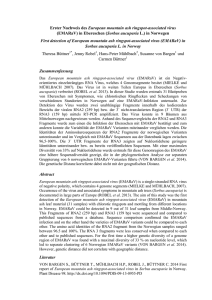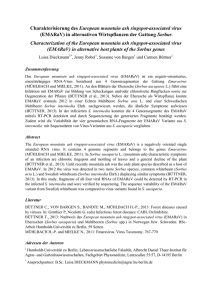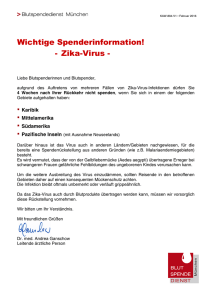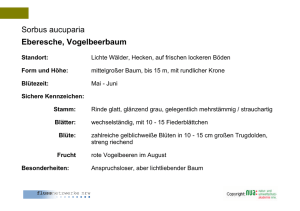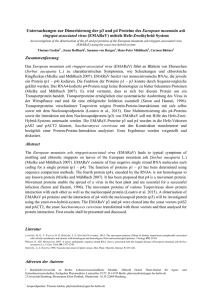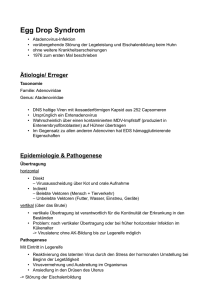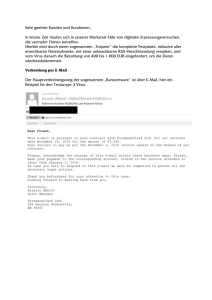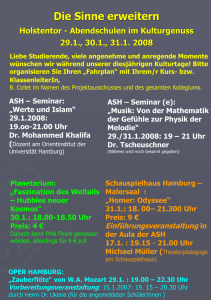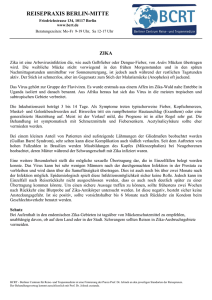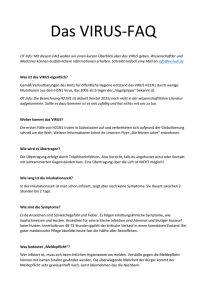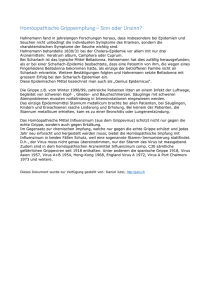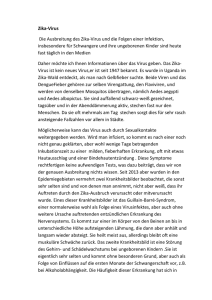Nachweis des European mountain ash ringspot
Werbung
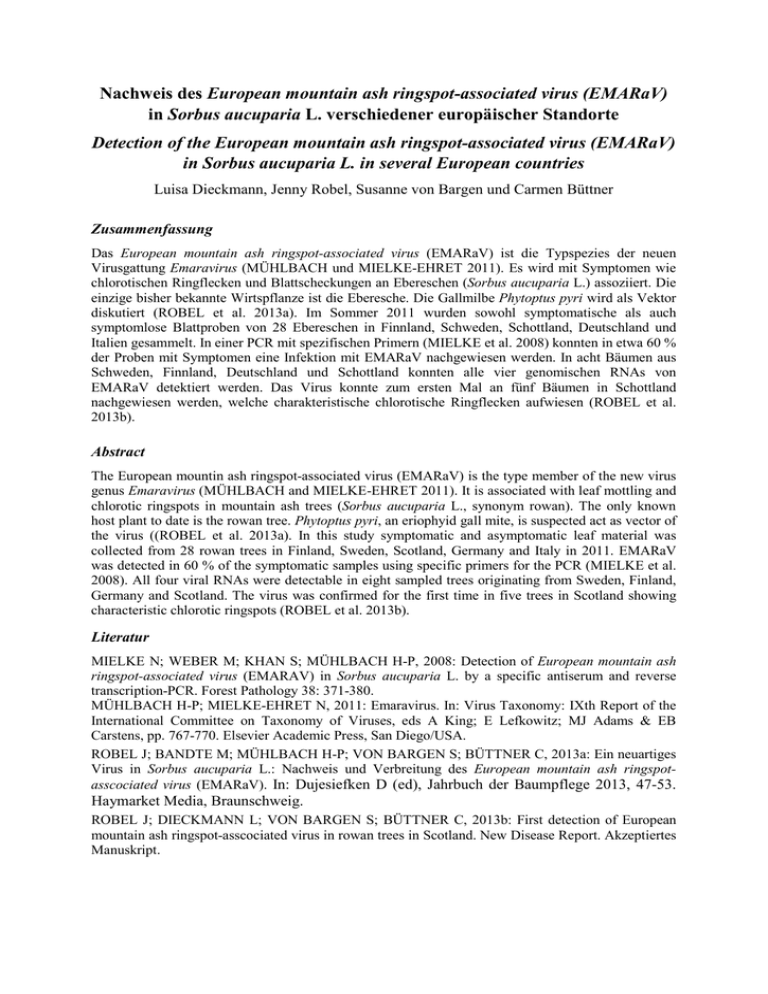
Nachweis des European mountain ash ringspot-associated virus (EMARaV) in Sorbus aucuparia L. verschiedener europäischer Standorte Detection of the European mountain ash ringspot-associated virus (EMARaV) in Sorbus aucuparia L. in several European countries Luisa Dieckmann, Jenny Robel, Susanne von Bargen und Carmen Büttner Zusammenfassung Das European mountain ash ringspot-associated virus (EMARaV) ist die Typspezies der neuen Virusgattung Emaravirus (MÜHLBACH und MIELKE-EHRET 2011). Es wird mit Symptomen wie chlorotischen Ringflecken und Blattscheckungen an Ebereschen (Sorbus aucuparia L.) assoziiert. Die einzige bisher bekannte Wirtspflanze ist die Eberesche. Die Gallmilbe Phytoptus pyri wird als Vektor diskutiert (ROBEL et al. 2013a). Im Sommer 2011 wurden sowohl symptomatische als auch symptomlose Blattproben von 28 Ebereschen in Finnland, Schweden, Schottland, Deutschland und Italien gesammelt. In einer PCR mit spezifischen Primern (MIELKE et al. 2008) konnten in etwa 60 % der Proben mit Symptomen eine Infektion mit EMARaV nachgewiesen werden. In acht Bäumen aus Schweden, Finnland, Deutschland und Schottland konnten alle vier genomischen RNAs von EMARaV detektiert werden. Das Virus konnte zum ersten Mal an fünf Bäumen in Schottland nachgewiesen werden, welche charakteristische chlorotische Ringflecken aufwiesen (ROBEL et al. 2013b). Abstract The European mountin ash ringspot-associated virus (EMARaV) is the type member of the new virus genus Emaravirus (MÜHLBACH and MIELKE-EHRET 2011). It is associated with leaf mottling and chlorotic ringspots in mountain ash trees (Sorbus aucuparia L., synonym rowan). The only known host plant to date is the rowan tree. Phytoptus pyri, an eriophyid gall mite, is suspected act as vector of the virus ((ROBEL et al. 2013a). In this study symptomatic and asymptomatic leaf material was collected from 28 rowan trees in Finland, Sweden, Scotland, Germany and Italy in 2011. EMARaV was detected in 60 % of the symptomatic samples using specific primers for the PCR (MIELKE et al. 2008). All four viral RNAs were detectable in eight sampled trees originating from Sweden, Finland, Germany and Scotland. The virus was confirmed for the first time in five trees in Scotland showing characteristic chlorotic ringspots (ROBEL et al. 2013b). Literatur MIELKE N; WEBER M; KHAN S; MÜHLBACH H-P, 2008: Detection of European mountain ash ringspot-associated virus (EMARAV) in Sorbus aucuparia L. by a specific antiserum and reverse transcription-PCR. Forest Pathology 38: 371-380. MÜHLBACH H-P; MIELKE-EHRET N, 2011: Emaravirus. In: Virus Taxonomy: IXth Report of the International Committee on Taxonomy of Viruses, eds A King; E Lefkowitz; MJ Adams & EB Carstens, pp. 767-770. Elsevier Academic Press, San Diego/USA. ROBEL J; BANDTE M; MÜHLBACH H-P; VON BARGEN S; BÜTTNER C, 2013a: Ein neuartiges Virus in Sorbus aucuparia L.: Nachweis und Verbreitung des European mountain ash ringspotasscociated virus (EMARaV). In: Dujesiefken D (ed), Jahrbuch der Baumpflege 2013, 47-53. Haymarket Media, Braunschweig. ROBEL J; DIECKMANN L; VON BARGEN S; BÜTTNER C, 2013b: First detection of European mountain ash ringspot-asscociated virus in rowan trees in Scotland. New Disease Report. Akzeptiertes Manuskript. Adressen der Autoren Humboldt-Universität zu Berlin, Landwirtschaftlich-Gärtnerische Fakultät,Department für Nutzpflanzen- und Tierwissenschaften,Fachgebiet Phytomedizin, Lentzeallee 55/57, D-14195 Berlin Ansprechpartner: DR Susanne VON BARGEN, [email protected]
